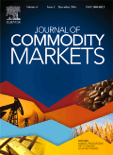
Journal of Commodity Markets
Scope & Guideline
Illuminating the Intersection of Economics and Commodities
Introduction
Aims and Scopes
- Commodity Price Dynamics:
Exploration of factors influencing the volatility and predictability of commodity prices, including macroeconomic indicators, geopolitical events, and market sentiment. - Risk Management Strategies:
Analysis of risk management techniques such as hedging and diversification in commodity trading to mitigate price risks and enhance investment strategies. - Market Interconnectedness:
Research on the interconnections between commodity markets and other financial markets, including equities, currencies, and cryptocurrencies, focusing on spillover effects and causality. - Impact of External Events:
Examination of how external shocks—such as climate change, pandemics, and geopolitical tensions—affect commodity prices and market behaviors. - Innovative Methodologies:
Application of advanced econometric and machine learning techniques to analyze commodity markets, including time-series analysis, quantile regression, and copula models.
Trending and Emerging
- Climate Risk and Commodities:
There is a growing emphasis on understanding how climate-related risks impact commodity price dynamics, reflecting an increasing awareness of environmental factors in market analysis. - Cryptocurrency and Commodities Interactions:
The exploration of relationships between cryptocurrencies and traditional commodities is on the rise, driven by interest in digital assets and their potential role as hedging instruments. - Advanced Machine Learning Applications:
The application of machine learning and artificial intelligence in analyzing commodity markets is trending, as these technologies provide enhanced predictive capabilities and deeper insights into complex data patterns. - Geopolitical Risk Analysis:
Research focusing on the effects of geopolitical events—such as wars and trade disputes—on commodity prices is becoming increasingly relevant, especially in light of recent global tensions. - Behavioral Finance in Commodity Markets:
The incorporation of psychological factors and investor behavior into commodity market analysis is emerging as a significant theme, recognizing the influence of sentiment on price movements.
Declining or Waning
- Traditional Hedging Techniques:
Research on conventional hedging strategies has decreased as newer, more sophisticated methods emerge, reflecting a shift towards innovative approaches in risk management. - Basic Price Predictability Models:
Studies relying on simpler econometric models for price prediction are becoming less common, signaling a transition towards more complex, multi-factor models that incorporate broader datasets and advanced analytics. - Static Analysis of Commodity Markets:
The focus on static analyses without considering dynamic interactions and time-varying relationships has waned, as researchers increasingly recognize the importance of adaptive modeling in understanding market behaviors. - Regulatory Impact Studies:
Investigations into the effects of regulatory changes on commodity markets have diminished, potentially due to a saturation of findings in this area and a shift towards more pressing contemporary issues like climate risk. - Historical Commodity Price Trends:
Research centered on historical trends and patterns in commodity prices is declining, as the field is moving towards real-time analysis and future-oriented forecasting techniques.
Similar Journals
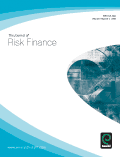
Journal of Risk Finance
Illuminating the landscape of risk management practices.The Journal of Risk Finance, published by Emerald Group Publishing Ltd, is a premier academic journal dedicated to advancing the understanding of risk management and finance practices since its inception in 1999. With a strong foothold within the Q2 rankings in both Accounting and Finance categories, it proudly holds a significant place in the scholarly landscape, ranking #54 out of 317 in the Scopus Economics and Finance category, placing it in the 83rd percentile. The journal aims to facilitate the exchange of innovative research and practical insights, catering to an audience of researchers, professionals, and students eager to explore contemporary issues in risk finance. While not an open access journal, it provides numerous access options, ensuring that essential findings reach a broad readership. Set in the United Kingdom and covering publications up to 2024, the Journal of Risk Finance continues to be an indispensable resource for those committed to this critical field.
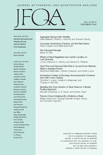
JOURNAL OF FINANCIAL AND QUANTITATIVE ANALYSIS
Fostering Rigorous Discussions in Finance and EconomicsJOURNAL OF FINANCIAL AND QUANTITATIVE ANALYSIS, published by Cambridge University Press, is a premier peer-reviewed journal that has been at the forefront of the finance and economics fields since its inception in 1966. With a notable impact factor reflecting its Q1 status in Accounting, Economics and Econometrics, and Finance for 2023, the journal is recognized for its substantial contributions to both theoretical and empirical research. Researchers and practitioners alike benefit from its comprehensive scope, addressing critical issues in financial analysis and quantitative methods. Although the journal does not currently offer open access, it remains widely accessible through institutional subscriptions. The editorial team is committed to fostering rigorous academic discussions that shape the future of finance and economics, making it an essential resource for academics, students, and industry professionals seeking to deepen their understanding of these vital disciplines. For more than five decades, this journal has continued to be an indispensable platform for disseminating influential research, thus solidifying its role as an essential cornerstone in the financial and quantitative analysis community.
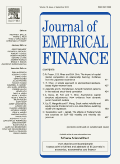
Journal of Empirical Finance
Unveiling the data behind financial phenomena.Journal of Empirical Finance, published by Elsevier, stands as a key resource in the areas of finance and economics, with a definitive focus on empirical studies. As a prominent journal since its inception in 1993, it has made significant strides in contributing to the academic community, evidenced by its soaring categorization in Q1 for Finance and Q2 for Economics and Econometrics as of 2023. With an ISSN of 0927-5398 and an E-ISSN of 1879-1727, the journal emphasizes robust, data-driven analysis to inform both theoretical and practical aspects of financial research. While access options do not include open access, the journal ensures that its content remains accessible to a diverse audience of researchers, professionals, and students. It fosters a platform for innovative research and discourse, significantly impacting the fields of finance, economics, and econometrics. The Scopus rankings further bolster its reputation, placing it in the 61st percentile in both categories, reflecting a commitment to high-quality research output. As the journal continues to evolve, it invites contributions that push the boundaries of empirical finance, enabling a deeper understanding of financial mechanisms that drive global economies.
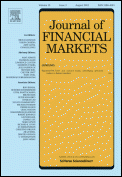
JOURNAL OF FINANCIAL MARKETS
Shaping the future of finance through rigorous research.Journal of Financial Markets, published by Elsevier, is a premier academic journal focusing on the theoretical and empirical aspects of financial markets. With its ISSN 1386-4181 and E-ISSN 1878-576X, this journal has solidified its reputation as a leading source in both the Economics and Econometrics and Finance fields, achieving a Q1 ranking in 2023 across these categories. Operating from Amsterdam, Netherlands, the journal not only highlights significant research developments but also fosters discussion on the implications of financial innovations and policy changes. The impact factor reflects its critical role among academic peers, contributing to the advancement of knowledge in financial systems and market behavior. Although not open access, the journal provides numerous subscription options for those eager to explore its wealth of resources and broaden their understanding of dynamic financial phenomena.
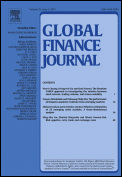
Global Finance Journal
Uncovering insights that shape financial landscapes.Global Finance Journal is an esteemed periodical published by Elsevier, dedicated to the dynamic fields of finance and economics. With an impressive history spanning from 1989 to 2024, this journal holds a significant position in the academic community, boasting a Q1 quartile ranking in both Economics and Econometrics, as well as Finance, as of 2023. It is highly regarded in Scopus rankings, placing 40th out of 317 in Finance and 99th out of 716 in Economics and Econometrics, demonstrating its influence and reach among researchers and practitioners alike. Although not an open-access journal, the Global Finance Journal provides rigorous peer-reviewed articles that explore critical issues, advance theoretical frameworks, and address practical applications in global finance. As such, it serves as a vital resource for researchers, financial professionals, and students aiming to deepen their understanding of economic phenomena and contribute to the ongoing discourse in these vibrant disciplines.
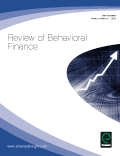
Review of Behavioral Finance
Exploring the Psychology Behind Financial DecisionsReview of Behavioral Finance is a distinguished journal published by Emerald Group Publishing Ltd, focusing on the dynamic interplay of psychology and finance. With an ISSN of 1940-5979 and an E-ISSN of 1940-5987, this journal serves as a pivotal platform for researchers, professionals, and students keen on exploring innovative behavioral financial practices. Operating from the United Kingdom, the journal has made significant strides since its inception in 2009, converging years up to 2024. It is well-regarded in its field, achieving Q2 rankings in Accounting, Finance, and Strategy and Management for 2023, reflecting its influential contributions to these domains. The journal's rigorous peer-review process guarantees the quality of published research, making it an essential resource for academics seeking to enhance their understanding of behavioral finance. While the journal does not currently offer open access, it remains accessible through various academic databases, facilitating the dissemination of vital financial insights. Engage with the cutting-edge research that shapes the future of finance today!
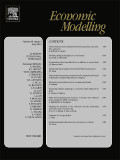
ECONOMIC MODELLING
Unlocking the Future of Economics with Innovative Methodologies.ECONOMIC MODELLING, published by Elsevier, is a leading academic journal in the field of Economics and Econometrics, with a commendable impact factor that underscores its significance within the research community. Since its inception in 1984, this journal has been pivotal in disseminating high-quality research that contributes to the advancement of theoretical and empirical methodologies in economics. As a Q1 journal in its category, it ranks in the top 88th percentile according to Scopus, solidifying its reputation as an influential platform for economists and academicians. Although it does not offer open access, the journal maintains a robust subscription model, ensuring wide distribution of critical insights and findings. Researchers, practitioners, and students are encouraged to engage with the latest developments in economic modelling, making ECONOMIC MODELLING an essential resource for anyone seeking to understand and contribute to the evolving landscape of economic theory and application.

Quantitative Finance and Economics
Transforming Financial Decision-Making Through Rigorous StudiesQuantitative Finance and Economics, published by the American Institute of Mathematical Sciences (AIMS), is a pioneering open-access journal committed to advancing the fields of finance and economics. Established to disseminate high-quality research, this journal has been an open-access platform since 2017, promoting wider accessibility to vital academic findings. It serves as a crucial resource for researchers and professionals alike, offering valuable insights through rigorous studies in quantitative methods that influence financial and economic decision-making. Although current Scopus rankings indicate emerging challenges, with a rank in the lower percentiles across various categories, Quantitative Finance and Economics strives to gain recognition by bridging theoretical frameworks with practical applications. The journal invites contributions that explore innovative quantitative techniques and their implications in contemporary economic scenarios, thus underscoring its role in shaping discourse and research in this critical sector.

Journal of Energy Markets
Advancing Knowledge in Energy Market StrategiesJournal of Energy Markets, published by Incisive Media, is a vital platform dedicated to advancing the understanding of energy market dynamics, with an ISSN of 1756-3607 and an E-ISSN of 1756-3615. Established in the United Kingdom, the journal explores the intersection of economics, energy, and strategic management, serving as a key resource for researchers, professionals, and students alike. While the journal is currently categorized in the Q4 quartile across relevant fields such as Economics and Econometrics, it aims to stimulate scholarly dialogue, enhance empirical research, and present innovative methodologies in the rapidly evolving energy sector. Despite its nascent impact factor in 2023, the Journal of Energy Markets remains committed to publishing high-quality articles that address critical issues and trends affecting the global energy landscape. The journal is essential for those looking to deepen their knowledge and contribute to ongoing debates within this important field.

Asia-Pacific Financial Markets
Advancing Knowledge in Asia-Pacific Financial MarketsAsia-Pacific Financial Markets is a distinguished academic journal published by SPRINGER, dedicated to advancing the field of finance research in the Asia-Pacific region. With an ISSN of 1387-2834 and an E-ISSN of 1573-6946, this journal fosters scholarly discourse on contemporary financial markets, investment strategies, and economic policy implications. Situated within the Q3 category in Finance for 2023, it ranks #140 out of 317 in the Scopus database, reflecting its growing significance and impact within the financial research community, as evidenced by its 55th percentile ranking. Since its inception in 1996, the journal has served as a pivotal platform for researchers, professionals, and students alike, featuring rigorous empirical studies and theoretical frameworks that address emerging financial trends and challenges. While it operates under a subscription model, the journal's comprehensive scope and commitment to high academic standards make it an essential resource for anyone looking to deepen their understanding of finance in the dynamic Asia-Pacific landscape.